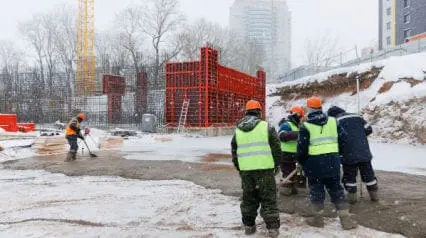What is Ground Thawing?
Ground thawing is the process of heating the ground to create a workable and stable base for construction. It is most commonly used in areas where the ground is too frozen to excavate or when the ground needs to be stabilized prior to construction.
Ground thawing is a specialized process that requires trained professionals and specialized equipment. The most common method of ground thawing is to use thermal blankets, which are placed over the ground and then heated.
Why is it Essential on Construction sites?
Ground thawing is a process that is often used on construction sites located in colder climates to help make the soil easier to work with. It is an essential process on construction sites because it allows crews to excavate and install foundations and utilities without causing damage to the surrounding site.
What Equipment is Used for Ground Thawing?
There are several types of equipment used in ground thawing. Let’s discuss each type and how it is used
Ground Thaw Heater Blankets
Heating blankets are large, insulated blankets that are placed over the ground. A ground thawing heater is then used to heat the blankets, which in turn melts the ground beneath them. These are often used by utility companies to thaw underground pipes.
Hot Air Blowers
Hot air blowers work by blowing hot air over the ground. This hot air melts the ground, making it easier to dig or excavate. These types of blowers are often used on households.
Ground Thaw Machines
These are large machines that use a heating element to thaw the ground. The machine is connected to a water supply, and as it heats the ground, the water is pumped through the machine to keep it from overheating.
Hydronic Surface Heaters
Hydronic surface heaters use a circulating fluid to transfer heat to the ground. The fluid is heated using a gas or diesel burner, and as it circulates, it transfers heat to the ground, melting any snow or ice that is in contact with it.
Methods of Ground Thawing
The process of ground thawing can be done using a number of different methods, including electrical, steam, and hot water.
Electrical
Electrical ground thawing is the most common method of thawing ground. It uses electrical currents to heat the ground and thaw the frozen soil. This type of method is usually used in areas where access to electricity is available.
Steam
Steam ground thawing uses steam to heat the ground and thaw the frozen soil. Steam ground thawing is quick and efficient, but it can be expensive. This process is more cost effective than electrical thawing and is often used for larger projects.
Hot Water
The use of hot water to thaw ground is another popular method of thawing. This process requires the pumping of hot water through pipes that are buried underneath the frozen ground. The heat from the hot water helps to thaw the soil and make it more pliable for construction.
Ground Thawing Tips
As the warmer months approach, you may be thinking about starting some construction projects that were put on hold over the winter season. But before you can start building, you need to make sure the ground is thawed and ready to work with. Here are a few tips to help you get started:
- Start by testing the ground with a hand auger. If the auger can’t penetrate the ground, it’s not ready to be worked on.
- Once you’ve determined that the ground is thawed, use a rototiller to loosen the soil. This will make it easier to work with when it’s time to start construction.
- If you’re working with a large area, you may want to rent a power tiller. This will make the job go faster and easier.
- Make sure that your gutters are clean and clear of debris. This will allow water to flow freely away from your home and prevent it from seeping into the ground and causing the soil to expand.
- You should also check the exterior for any cracks or holes that need to be repaired. These can allow water to enter your home and may cause water damage.
- If you have an underground area, you should also make sure that it is properly insulated and vented. This will help to prevent warm air from melting the frozen ground around your foundation.
- Inspect your equipment and tools for any damage that may have occurred during the winter.
- Be aware of your surroundings and watch for any changes in the ground, such as cracks or holes.
- Stay hydrated and take breaks often, especially if you’re working in a warm environment.
- Wear appropriate clothing and safety gear, including gloves, goggles, and a dust mask.
- If you’re working near water, be aware of the potential for flooding and take precautions accordingly.



